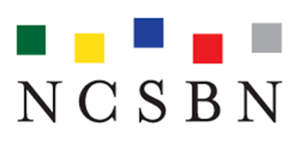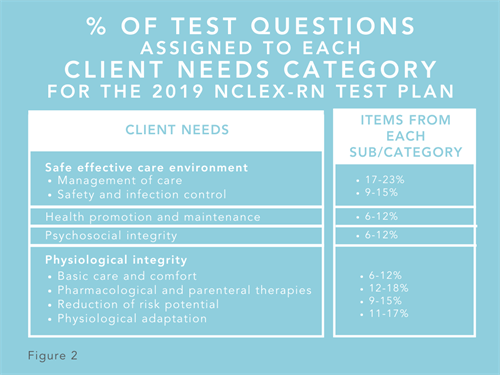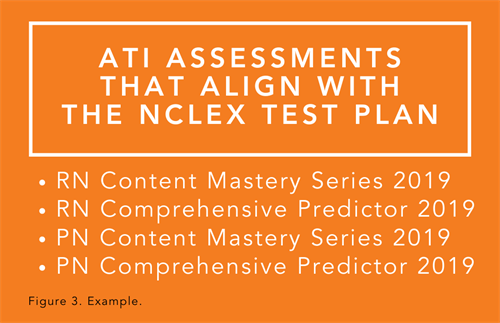WHY IT'S A NO-BRAINER TO ‘TEACH TO THE (NCLEX) TEST’
Jul 8, 2020, 14:54 PM
<7-min. read> The NCLEX test evaluates candidates’ ability to think like a nurse. ATI’s psychometricians do that by turning NCSBN research into assessments.
GO BEHIND THE SCENES TO SEE HOW NCSBN RESEARCH BECOMES AN ASSESSMENT
 By Tony Juve, PhD, Senior Psychometric Advisor, ATI Assessment Sciences
By Tony Juve, PhD, Senior Psychometric Advisor, ATI Assessment Sciences
ATI produces state-of-the-art educational assessments for nursing schools. But have you ever wondered about the nuts-and-bolts development of these assessments? For example, who creates them? The short answer: A solid team of experts — known as psychometricians — with multifaceted industry knowledge, specialized skills, unrelenting determination, and crazy-fast hustle for bringing solutions to market.But that answer only leads to additional questions: How do these individuals develop ATI’s assessment solutions? And, perhaps, more to the point: How does ATI ensure these assessments reflect current nursing content and cognitive measurement specifications prescribed by the National Council of State Boards of Nursing (NCSBN)?
Here, we’ll focus on 5 key questions that explain how ATI develops assessments that promote successful outcomes for nursing schools and nursing students.
Q1: WHAT IS THE PURPOSE OF THE NCSBN?
The NCSBN is the world leader in nursing regulatory knowledge. It is an independent, not-for-profit organization through which nursing regulatory bodies act and counsel together on matters of common interest and concern. Topics in which it takes specific interest are those affecting public health, safety, and welfare, including the development of nursing licensure examinations.The NCSBN is dedicated to developing psychometrically sound and legally defensible nursing licensure exams consistent with current nursing practices. Specifically, the NCSBN created — and continually updates — the National Council Licensure Examination (NCLEX).
The impact of the NCSBN on the healthcare industry, nursing programs, and nursing students is immense; about 5.7 million nursing candidates have taken the NCLEX since April 1994. The success of nursing programs, in part, is evaluated on their students’ NCLEX pass rates.
Q2: HOW DOES THE NCSBN IMPACT ATI?
 ATI works closely with nursing programs to prepare their students to pass the NCLEX and become safe, competent nurses. To accomplish this task, ATI continuously monitors current nursing practices (i.e., what nursing job tasks are expected of entry-level nurses?) and how best to prepare students for a nursing career.
ATI works closely with nursing programs to prepare their students to pass the NCLEX and become safe, competent nurses. To accomplish this task, ATI continuously monitors current nursing practices (i.e., what nursing job tasks are expected of entry-level nurses?) and how best to prepare students for a nursing career.To create the best assessments possible, ATI relies on NCSBN research, which studies specific nursing education trends and practices. For example, the NCSBN conducts a job or nursing practice-analysis study as the basis for developing its RN and PN test plans and test questions.
ATI’s emphasis on NCSBN research has led some to state that ATI “teaches to the (NCLEX) test.” Conversely, these companies state, they go beyond teaching students to pass the NCLEX; they help students learn how to think like a nurse.
The problem with this argument is that the whole point of the NCLEX is to assess a candidate's ability to provide safe, effective nursing care upon entry into practice — in other words to think like a nurse. The licensure exam ensures candidates are prepared to provide safe, quality nursing care. ATI develops every question on its assessments to meet this exact goal. And ATI ties every question to specific nursing practice tasks that entry-level nurses must be prepared to encounter. (More on that later.)
Teaching to the test, then, is crucial to ensuring students develop the specific critical thinking and clinical judgment skills needed to be safe providers — to think like a nurse. And, of course, when students learn the critical thinking and clinical judgment skills? The vast majority pass the NCLEX, which is required to be a licensed nurse.
It’s kind of a no-brainer, then, to teach to the test.
Q3: WHY IS THE NCSBN NURSING PRACTICE STUDY IMPORTANT?
The nursing practice-analysis study assists the NCSBN in evaluating the validity of the test plan that guides the nursing content placed on the NCLEX-RN and NCLEX-PN. Because the U.S. healthcare industry is rapidly changing, the NCSBN conducts a nursing practice-analysis study every 3 years for RNs and PNs. This research study identifies the knowledge, critical thinking, and clinical judgment skills needed by newly licensed RNs and PNs. The NCSBN then uses its findings to develop current and relevant test questions for the NCLEX.As part of its study, the NCSBN surveys a random sample of newly licensed RNs and PNs. The survey asks respondents to identify the most frequently performed clinical activities for the newly licensed nurses. Respondents also rate the overall importance of each clinical activity considering safe and effective professional practice, regardless of specific practice settings. The NCSBN then publishes its findings in the Test Plans for the National Council Licensure Examination for Registered and Practical Nurses.
 The NCLEX Test Plan provides a concise summary of the content and scope of the exam. It serves as a guide for both exam development and candidate preparation. More specifically, it includes a detailed list of the nursing job tasks expected of entry-level nurses (for an example, see Figure 1, at right), as well as the overall NCLEX content distribution. (See Figure 2, below right.) The 2019 NCLEX-RN Test Plan lists 514 nursing job tasks.
The NCLEX Test Plan provides a concise summary of the content and scope of the exam. It serves as a guide for both exam development and candidate preparation. More specifically, it includes a detailed list of the nursing job tasks expected of entry-level nurses (for an example, see Figure 1, at right), as well as the overall NCLEX content distribution. (See Figure 2, below right.) The 2019 NCLEX-RN Test Plan lists 514 nursing job tasks.
 Q4: HOW DOES ATI NURSING USE THE NCSBN NURSING PRACTICE STUDY?
Q4: HOW DOES ATI NURSING USE THE NCSBN NURSING PRACTICE STUDY?
 ATI uses the NCLEX Test Plans to develop its assessments. (See Figure 3, below right.) It’s critical that the ATI assessments mirror the NCLEX content so that students will be exposed to and can practice with the same nursing content they will encounter on the NCLEX. To accomplish this task, ATI ensures that the Content Mastery Series (CMS) and Comprehensive Predictor (CP) assessments measure with the same nursing-content emphasis as specified by the NCSBN on the NCLEX. For example, ATI psychometricians ensure that 17% to 23% of the questions on the RN CMS and RN CP assessments are related to the Management of Care Client Needs NCLEX category. (Refer again to Figure 2.)
ATI uses the NCLEX Test Plans to develop its assessments. (See Figure 3, below right.) It’s critical that the ATI assessments mirror the NCLEX content so that students will be exposed to and can practice with the same nursing content they will encounter on the NCLEX. To accomplish this task, ATI ensures that the Content Mastery Series (CMS) and Comprehensive Predictor (CP) assessments measure with the same nursing-content emphasis as specified by the NCSBN on the NCLEX. For example, ATI psychometricians ensure that 17% to 23% of the questions on the RN CMS and RN CP assessments are related to the Management of Care Client Needs NCLEX category. (Refer again to Figure 2.)ATI also ensures that it develops questions to assess all 514 RN job tasks expected of entry-level nurses. Plus, our company methodically develops test questions that reflect the same cognitive-measurement specifications and question types (e.g., “Ordered Response”) on the NCLEX to better prepare students for their NCLEX testing experience.
After the NCSBN releases a new NCLEX test plan, ATI thoroughly reviews the plan, examining its overall content specifications, as well as the newly added and removed nursing job tasks. At this point, ATI is ready to update its assessments to reflect the NCSBN changes to the NCLEX Test Plan.
Q5: WHY IS THE NURSING PRACTICE STUDY IMPORTANT TO ATI?
It’s critical for ATI to understand the current practices performed by newly licensed nurses to ensure the company helps students develop into safe and competent professionals. This information is fundamental to the development and implementation of quality assessments that support the success of nursing schools, faculty, and students. As you might expect, ATI must proactively monitor current nursing practices and the NCSBN NCLEX licensing content to ensure its assessments are relevant and current. It’s also important to react quickly to NCLEX updates, so ATI’s assessments mirror the students’ NCLEX testing experience.The result of these efforts? Students understand and learn to apply the most crucial knowledge, critical thinking skills, and clinical judgment skills that will be assessed on the NCLEX. They can pass the test and move on to careers in which they are able to practice safely as new nurses. “Teaching to the test,” then, ultimately helps students to think like a nurse.
A FINAL NOTE
The NCSBN officially confirmed in 2019 that it will launch a new version of the NCLEX — what it refers to as the Next Generation NCLEX (NGN). The NCSBN realized the need for a new exam after completing a more involved version of its traditional nursing practice-analysis study. In this revised version, experts observed new nurses performing daily tasks and then reviewed those tasks to identify whether any of them required the need for clinical judgment. The study revealed that clinical judgment was a crucial skill required by new nurses to perform their jobs safely.Because the current version of the NCLEX was not designed to measure the skill of clinical judgment as well as the NCSBN would like, the organization determined that it needed a new test. After several years of research, the organization concluded that methods were viable to measure clinical judgment skills, and it is now working on the creation of new item types (new types of questions in different formats than were used in the past) to include on the new test. The new test is not expected to launch before 2023.
With a new version of the NCLEX only a few years off, ATI is paying even closer attention to the NCSBN's efforts and the new test plan. You can expect ATI to tailor its assessments to align with that framework. And, more than ever, ATI will be ensuring that nursing programs are able to assess students’ ability to “think like a nurse.”
